
Hello friends and Hivers! I'm back again to take you where I left off at with my visit at The University of Nebraska State Museum -Morrill Hall. If you missed part one you can take a look at it here. Let's start with some more mammals fossils.
 Oreodont
Oreodont
This mammal appears to look like a pig or hog. It's name really refers to its sharp like molars. Later on in my journey here I picked up some smaller skulls of it and there teeth were indeed sharp. Because of it's molars it is somewhat believed to be related to the camels. This one was in this area in pretty large numbers.
 Long Legged Rhinoceros
Long Legged Rhinoceros
This adult was typical of rhinos at this time. They were smaller but more agile than the modern rhinos. These animals were adapted to running and would have been in herds migrating like wild beasts.
 Teleoceras
Teleoceras
The Teleoceras is also referred to as the Barrel Bodied Rhinoceros. There hippo like bodies suggest they may have hung out in rivers and water holes. It's believed this specie lived in herds. In the Ashfall fossil beds (3 hours from me) they have uncovered more of these than any other extinct specie.
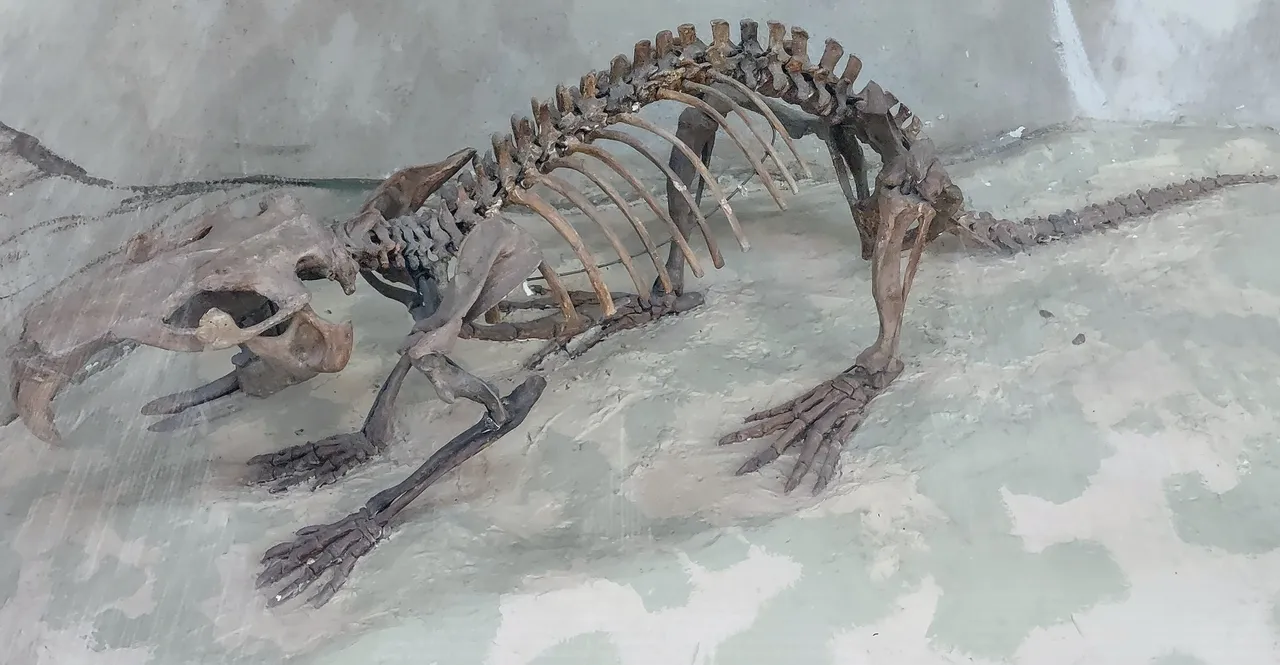 Giant Beaver
Giant Beaver
This one was a little shocking to me. It's comparable in size to that of a black bear. This beaver is only somewhat similar to the modern day one. It did not build damn like it's version today and did not have a paddle like tail. It did roam water areas and had some decent size choppers but mostly ate water vegetation. It's activity was more related to that of a modern day muskrat.
There were several other types of mammals to see here. Some include deer, elk, horses, wolves and others. I can't show you them all because there was just too many.
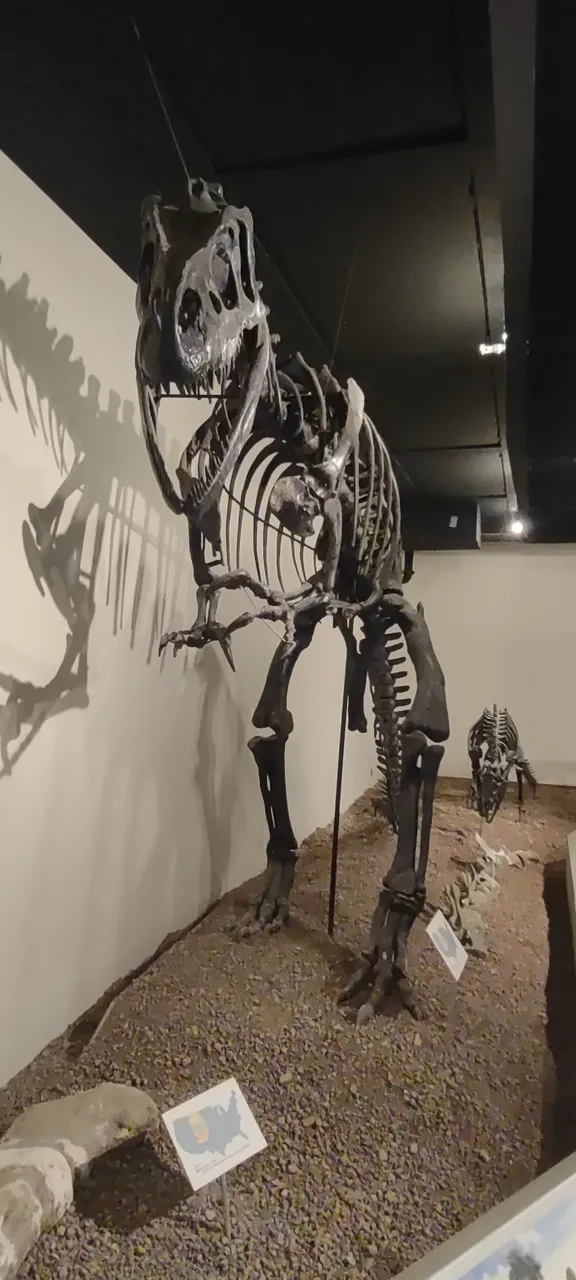


Here we got some dinosaurs fossils. When most think of fossils these creatures first come to mind. Even though in skeleton form you can feel how fierce of a predator they were just on its look. This particular one is from the late Jurassic period and is called the Allosaur. Some of these reached nearly the same size of its later born relative, Tyrannosaurus Rex (T-Rex). This fossil along with 44 other Allosaurs were found in Utah.
Adult dinosaurs probably would have cared for their youth from birth up until they could fend for themselves. I look at the younger one and wonder just how old it was when it met its despise. The Allosaur reached full size at 15 years and lived up to 28 years old.
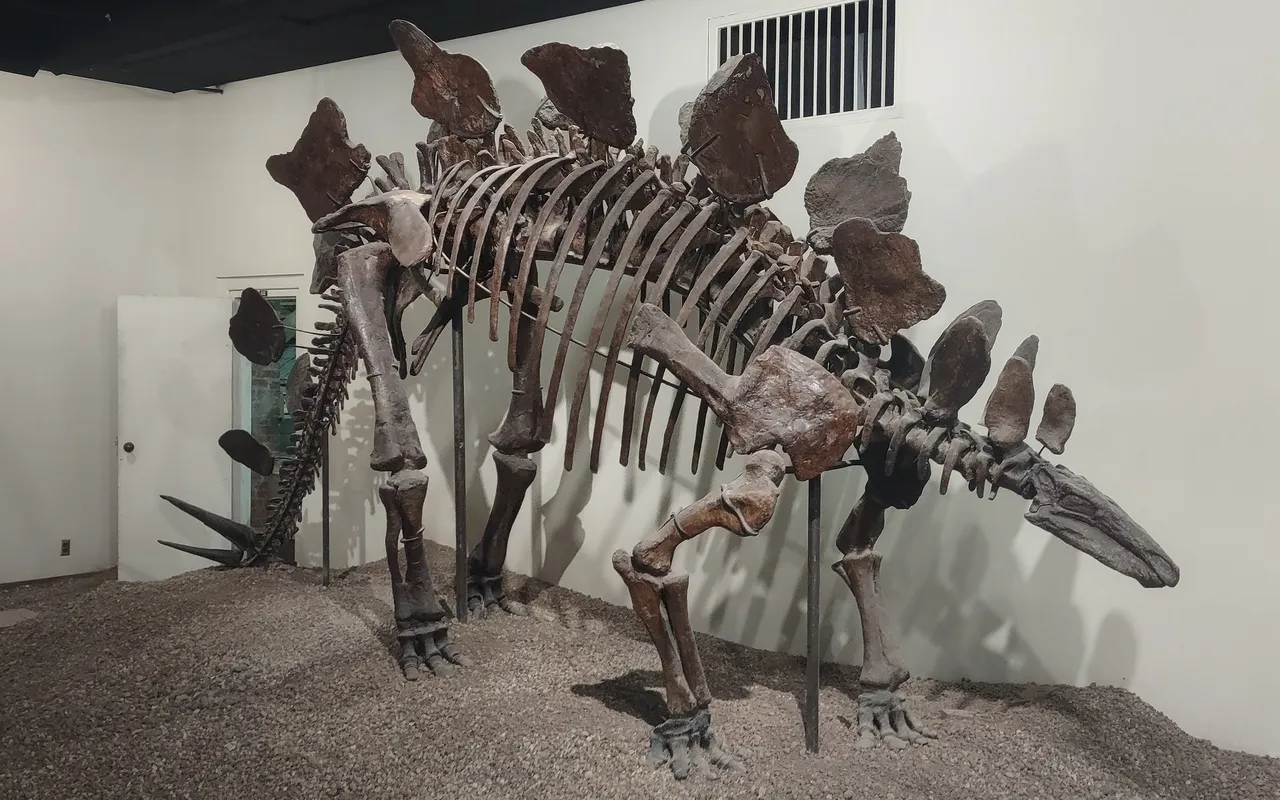
The above fossil skeleton is that of a Stegosaurus a plant eating dinosaur that also lived during the late Jurassic period. Its head and brain is one of the smallest among dinosaurs when comparing overall size. Some paleontologists believe their was an auxiliary brain (group of nerves) located near its rear legs to control its movement since it primary brain was so tiny.
There are many theories on its plates on its back. Some think they regulated body temperatures and others believe it was a symbol of attraction to attract the attention of other Stegosaurus. One thing is most certain it's spikes on its tail were used for defense against predators. I liked this one because it reminded me of a toy I had when I was younger. I had some of the Dinobots from the Transformers cartoon series and one of them was Stegosaurus.

Here we have a marine turtle that was recovered in Kansas. This fossil is around 85 million years old.
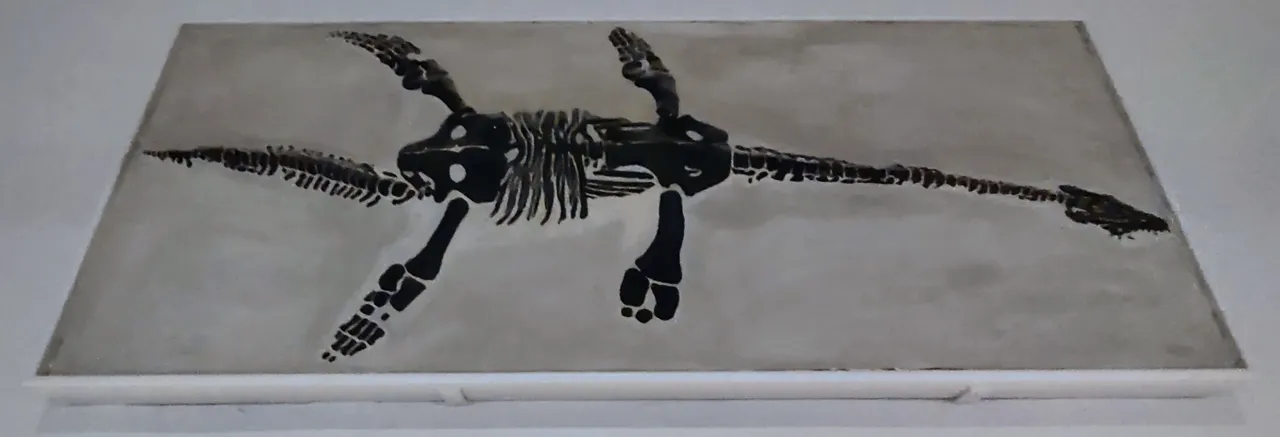
This is a juvenile Plesiosaur which came from England. I can't help but call this one Nessie, jr, haha. Yes this fits the Loch Ness Monster bill. This fossil is around 200 million years old.
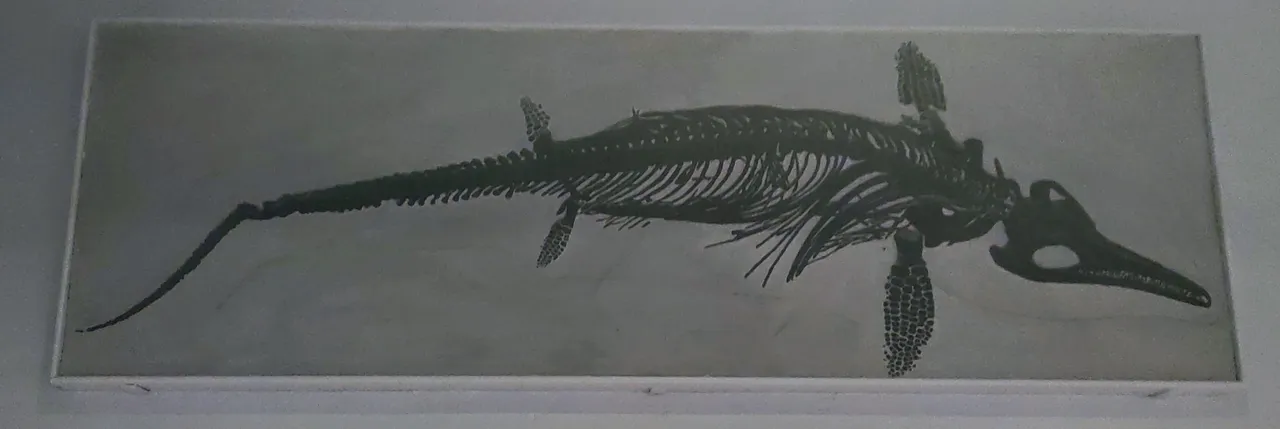
This is a small fossil of an Ichthyosaurus that was found in England. The ranged in length from 1 foot to 69 feet. They swam from 200 million years ago to about 65 million years ago marking the end of dinosaurs and the rise of mammals.
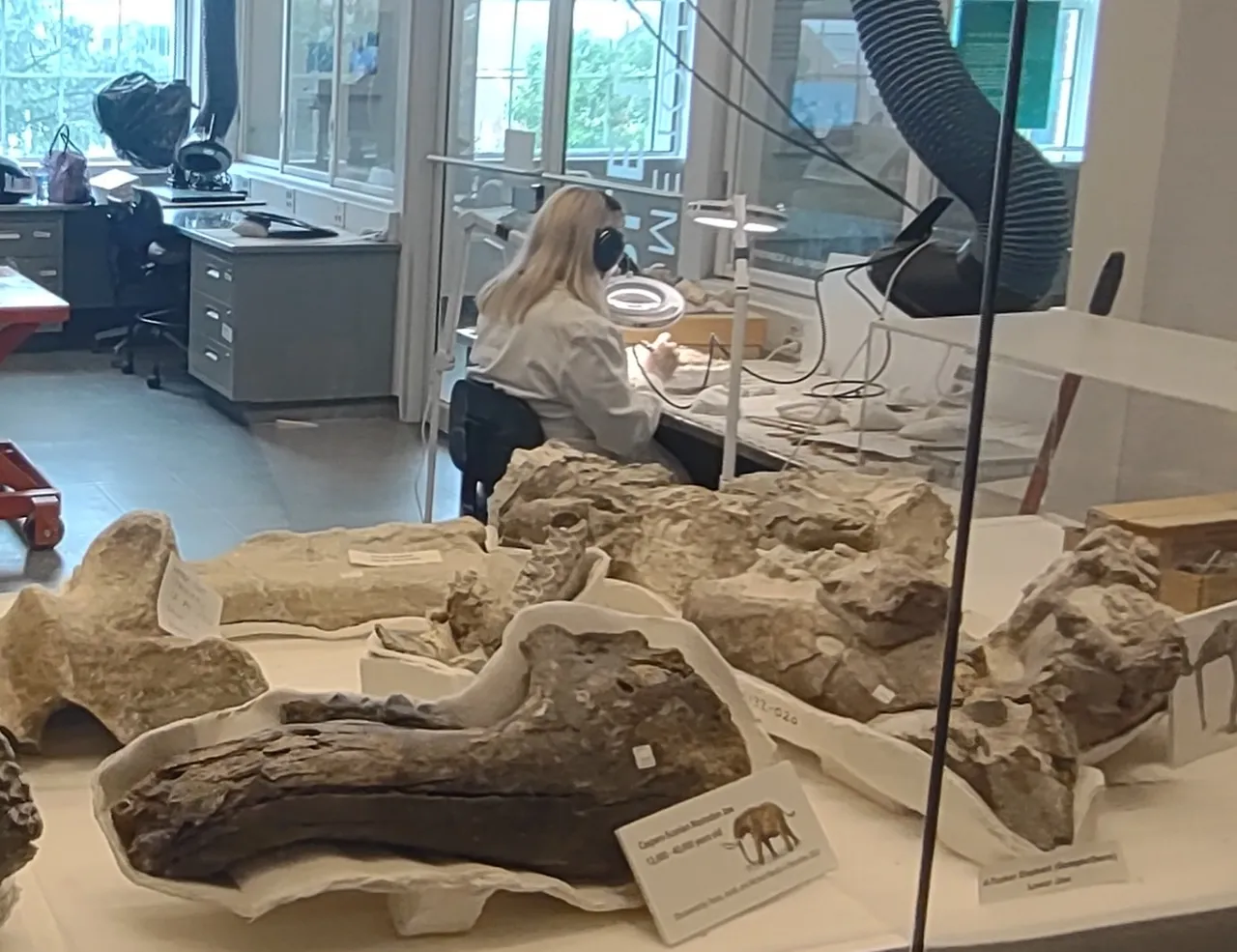

Alright I spent a great deal of time at this museum. I checked out the above lab on two separate occasions. It was really cool to see both of these ladies doing fossil work first hand. First visit I seen the one chiseling away at a rock. She was working with a small electrical tool while looking through an overhead giant magnifying glass contraption. She was an actual paleontologist and noticed my interest.

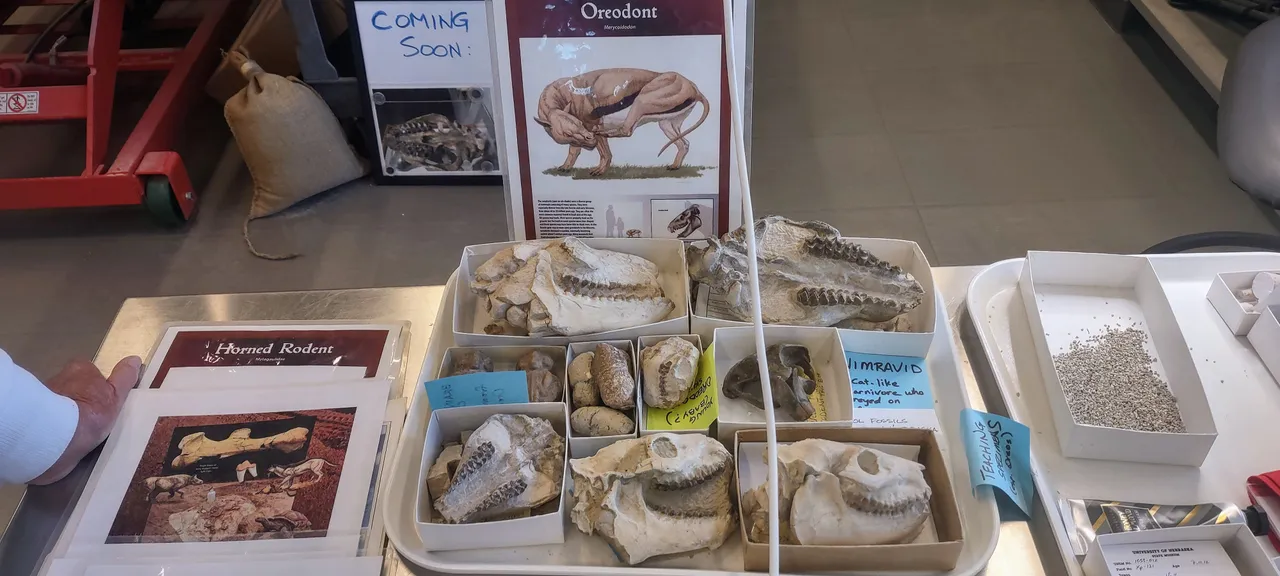
She stopped what she was doing and asked if I had any questions. I ended up asking her lots of questions but let's keep it simple for this article's sake, haha. So I asked her what was in the rock. I was a bit surprised when she told me she wasn't sure yet. She did mention it's more than likely a baby scull of Oreodont. She than grabbed a fossil of one and placed it on the rock.
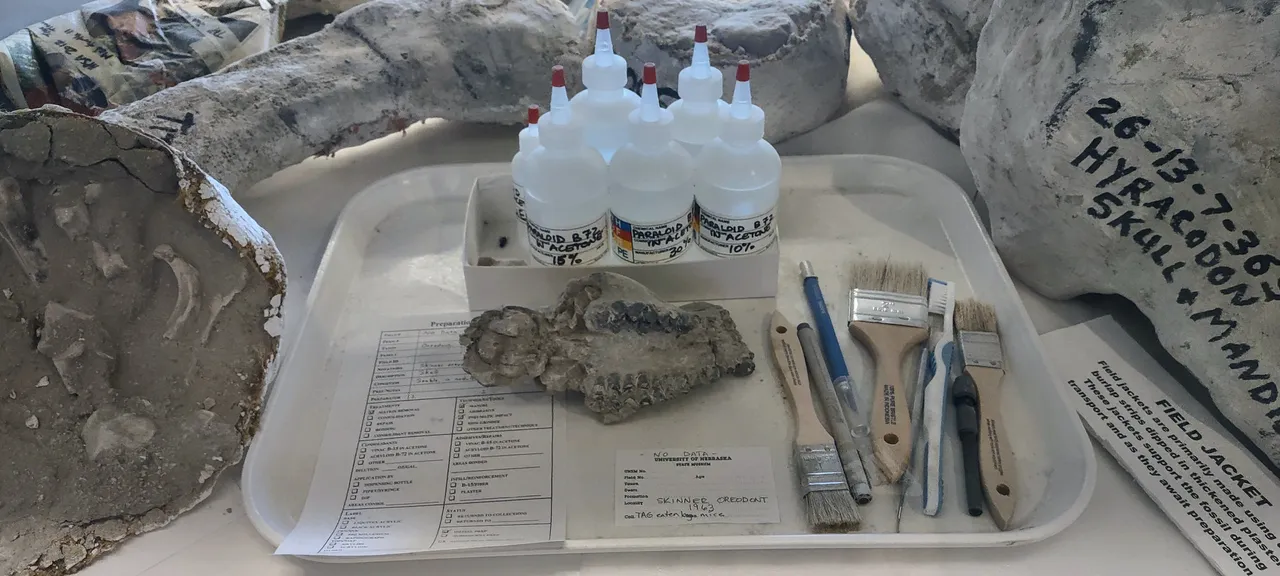
I asked several other questions one was about recovering fossils. I learned that it's not a simple process. You just don't dig and pull out fossils from their original resting place. Careful planning is done well before pulling them out from the surface their part of. Substances are used to strengthen and/or glue fossils so they don't fall apart when it's time to abstract. Also they have to be categorized with basically three questions when they were found, where they were found and who found them. So the paleontologist who do this often keep scaled sketch maps of their findings as well. I probably spent a good thirty minutes talking to her. I went back to the lab later on but she was gone.
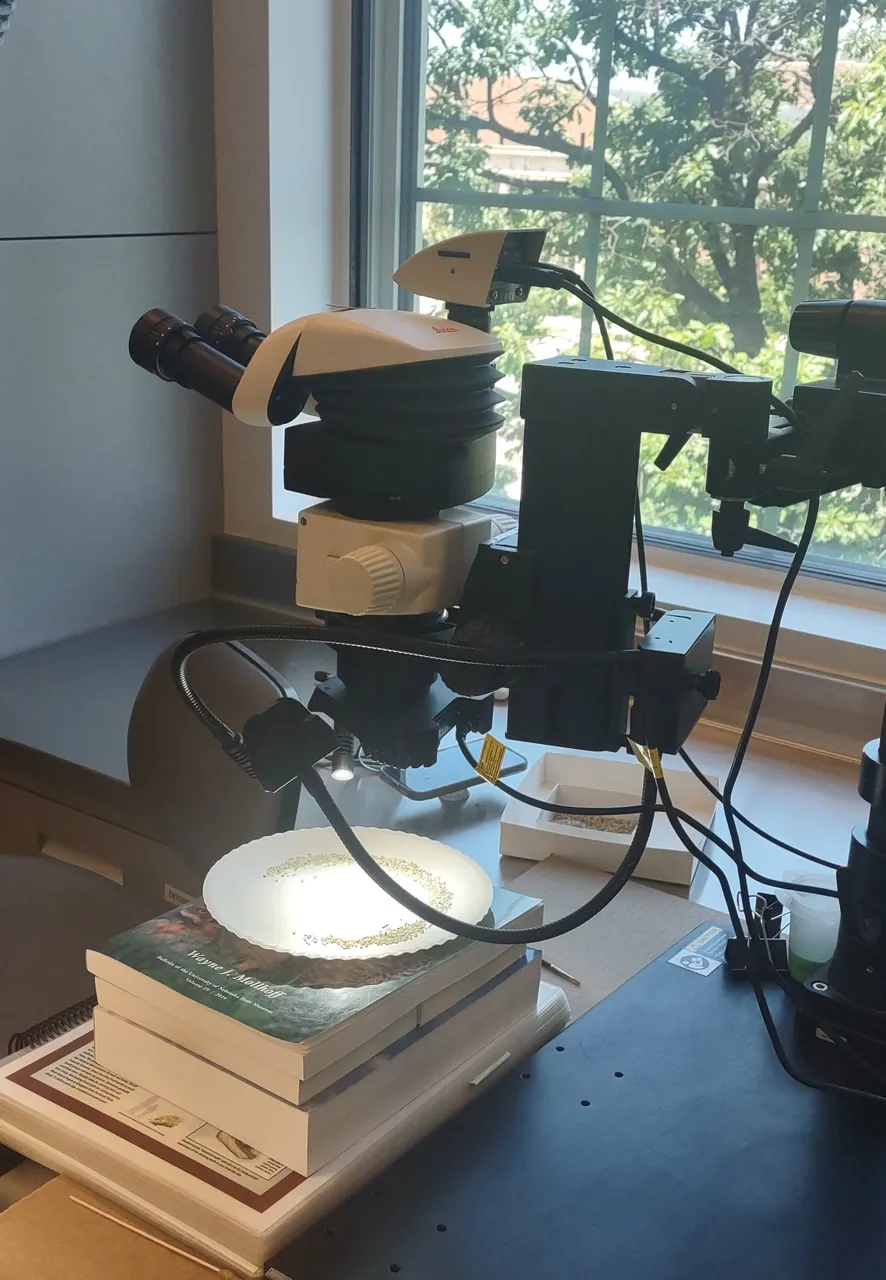
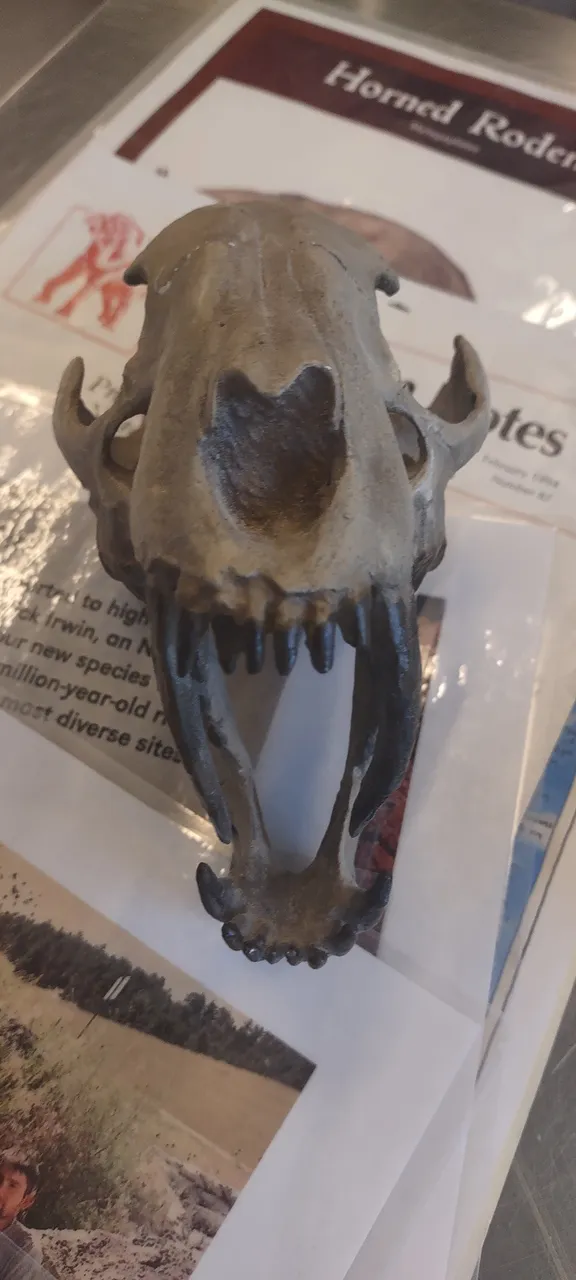
When I returned there was a different lady which was looking through a telescope looking machine. I talked with her as well and learned she was just a volunteer. She was going through soil samples looking for tiny fossils. She showed me some of her finds she has found recently.
Well she was a sweet older lady and she really wanted to show me a lot of things. I had no objections and I got to actually hold and touch a lot fossils that were in the laboratory, pretty cool experience. One would think these fossils are light and brittle. Not the case they feel heavy and thick like stone. Well eccentially they are stone. I spent a bit over an hour visiting with her. I had to dismiss myself.
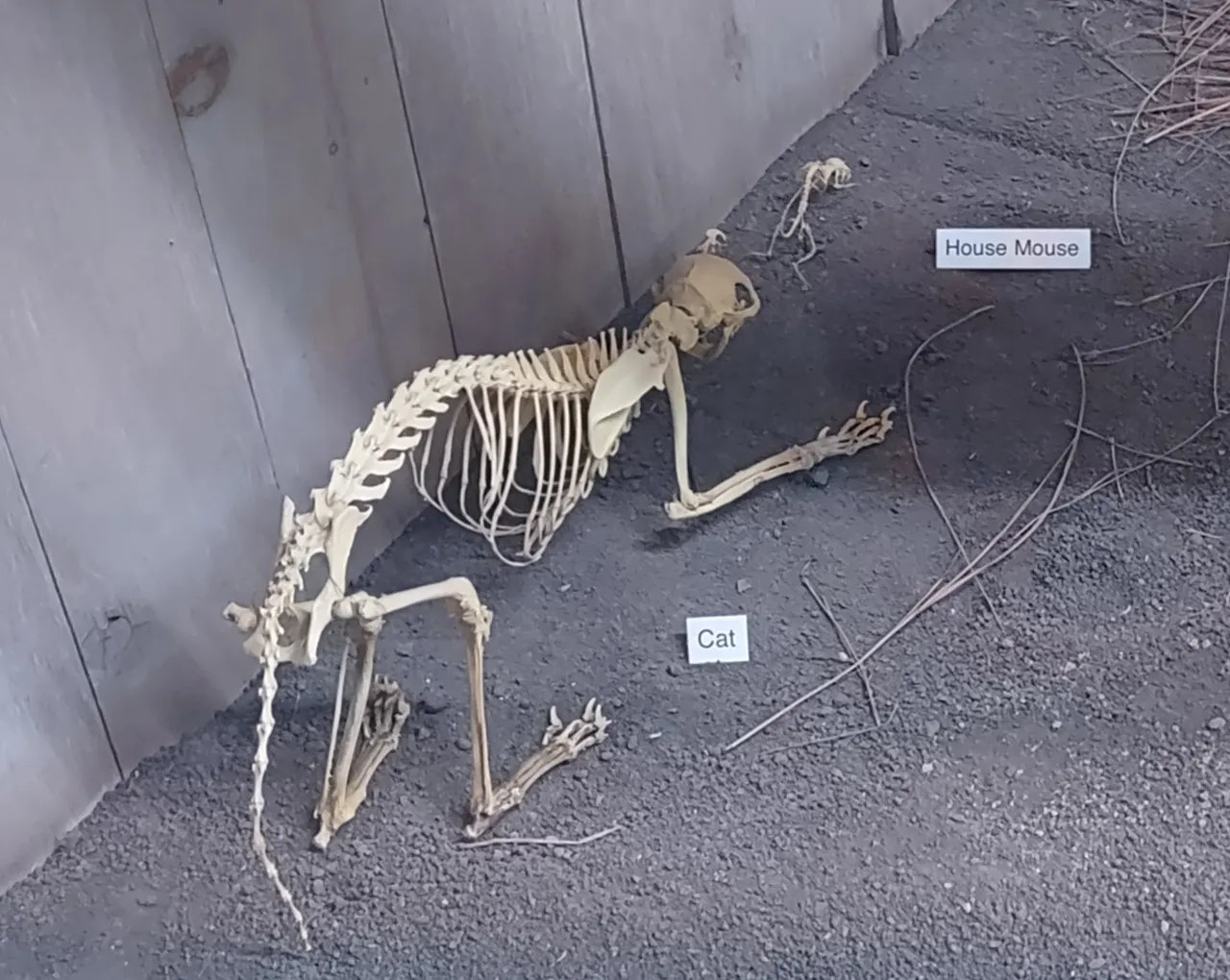


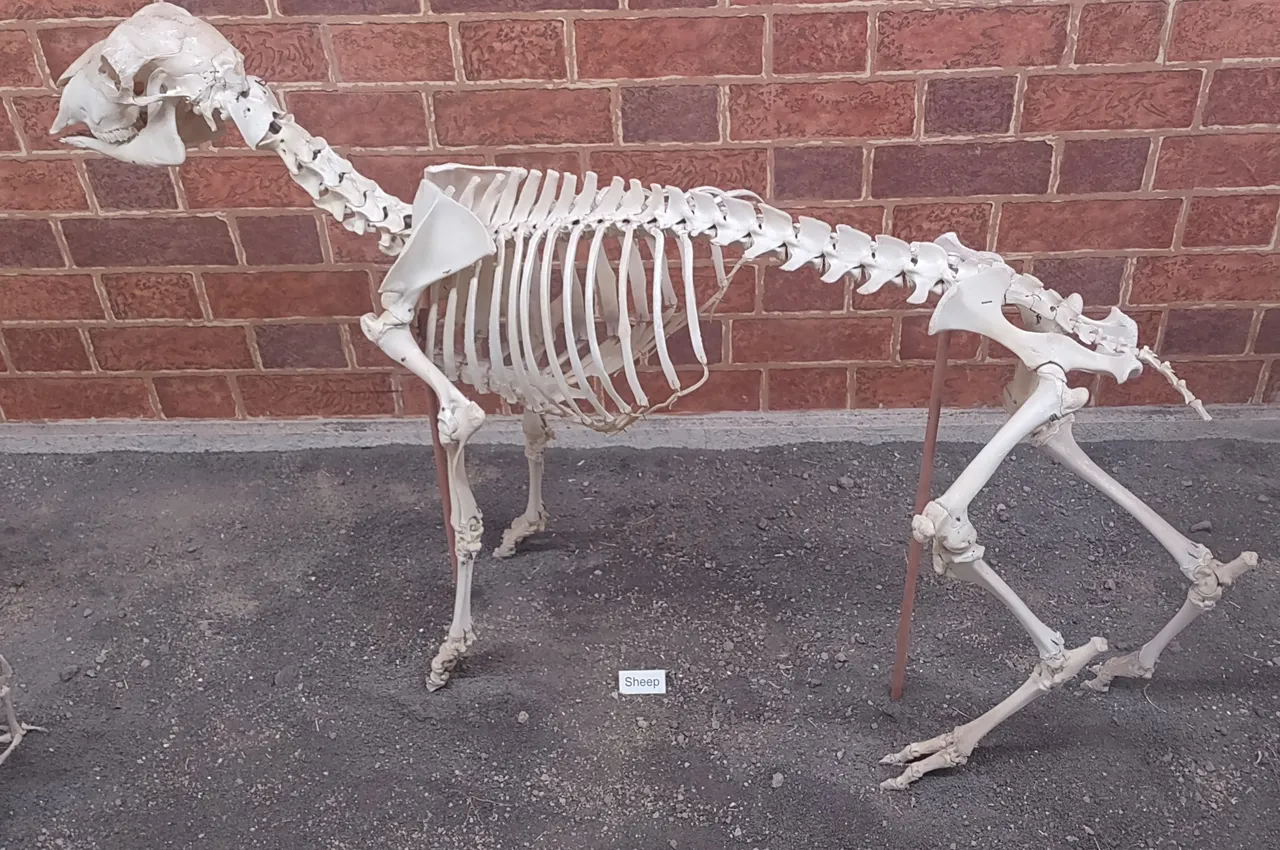
There was an exhibit that contained dozens of modern animal skeletons. Now these aren't fossils because in order to be classified as such they have to be at least 10,000 years old. Also the clear white colors are a dead giveaway. Many of the above you can figure out what they are based on shape and certain features.

Let's have a little fun with this. I erased the tag underneath this animal skeleton above. I can say that almost all of you have seen this animal at some point. The first person to place a comment with the correct answer I will give 2 Hive Stake Based Income (HSBI) to. Best of luck 😁
Update award claimed
Alright I have come to an end here. There's a lot more I could have shared but I don't want to make this a book, haha. Feel free to ask any questions you may have because I just might have the answer. I will say Nebraska has a lot of fossils not so much of dinosaurs though. That is because it was covered by an inland sea during the time the dinosaurs roamed. Anyways thanks for dropping by.
Take care, stay safe and enjoy the rest of your week. Until next time!